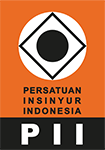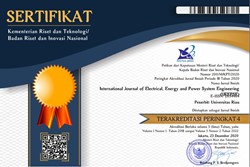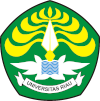Improving Student’s Coding Skill with Gamification Website-based Program
Abstract
People's dependence on digital technology has increased rapidly since the global Covid-19 pandemic. This causes the world's need for digital products and human resources to make digital products higher. Informatics Engineering Program is one of the providers of human resources who are proficient in the field of information technology. One of the basic skills that must be possessed to create digital products is programming or coding skills. The more skilled a person is at typing and understanding coding, the more complex the digital products he can create. This is why the coding ability of students in the Informatics Engineering Program must be improved. This website-based coding training program aims to improve the coding skills of Informatics Engineering students with interesting and fun gamification methods. Gamification methodology will greatly benefit student of Informatics Engineering Program in Riau University to improve his or her coding skill without consuming too much time and energy.
References
[1] Y. Vianna, M. Vianna, B. Medina, and S. Tanaka, Gamification, Inc. Recreating companies through games, 2014th ed. Rio de Janeiro: MJV Tecnologia Ltda, 2014.
[2] K. M. Kapp and J. Coné, What Every Chief Learning Officer Needs to Know about Games and Gamification for Learning. 2012.
[3] I. Glover, “Play as You Learn: Gamification as a Technique for Motivating Learners,” 2013.
[4] J. A. Fredricks and W. McColskey, “The Measurement of Student Engagement: A Comparative Analysis of Various Methods and Student Self-report Instruments,” in Handbook of Research on Student Engagement, 2012, pp. 763–782.
[5] G. Zichermann, Gamification Master Class. O’Reilly Media, 2011.
[6] G. Zichermann and C. Cunningham, Gamification by Design: Implementing Game Mechanics in Web and Mobile Apps. Sebastopol: O’Reilly Media, 2011.
[7] S. Deterding, D. Dixon, R. Khaled, and L. Nacke, From Game Design elements to Gamesfulness: Defining Gammification. Mindrek, 2011.
[8] M. A. Suparman, Desain Instruksional Moderen: Panduan Para Pengajar dan Inovator Pendidikan, 4th ed. Jakarta: Erlangga, 2014.
[9] A. K. Hahne, R. Benndorf, P. Frey, and S. Herzig, Attitude towards computer-based learning: Determinants as revealed by a controlled interventional study. Medical Education, 2005.
[10] L. De-Marcos, A. Domingues, J. Saenz-de-Navarrette, and C. Pages, an empirical study comparing gamification and social networking on e-learning. Elseiver: Computers & Education, 2014.
[11] L. De-Marcos, E. Garcia-Lopez, and A. Garcia-Cabot, On the effectiveness of game like and social approaches in learning: Comparing educational gaming, gamification & social networking. Elsevier: Computers & Education, 2016.
[12] S. L. Hoskins and J. C. van Hooff, “Motivation and ability: Which students use online learning and what influence does it have on their achievement,” British Journal of Educational Technology, vol. 2, no. 36, pp. 171–192, 2005.
[13] Menteri Pendidikan Republik Indonesia, “Keputusan Menteri Pendidikan Republik Indonesia No 045/U/2002 tentang Pedoman Penyusunan Kurikulum Pendidikan Tinggi dan Penilaian Hasil Belajar Mahasiswa,” Jakarta, 2002.
[14] IEEE Computer Society, IEEE Computing Curriculla. United States, 2005.
[15] Teknik Informatika Universitas Riau, Borang IIIA Akreditasi Program Studi Teknik Informatika Universitas Riau. Pekanbaru, 2018.



















